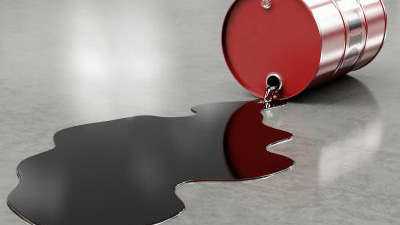
It’s a safe bet that investors are getting increasingly tired of all the conflicting forecasts about oil and gas prices. Some argue that oil is heading back to $20 thanks to the continuing excess supply. Others claim that the excess is overestimated and crude is well on its way to reach $80 or more by the end of the year. The likely truth, as usual, is somewhere in the middle, at least for the time being.
But according to energy consultants Douglas-Westwood, prices will remain where they are now until about 2019, when offshore oil production will finally peak. The company’s analysts list 15 large-scale offshore projects that are to blame, including Iran’s South Pars field, Brazil’s Lula in the pre-salt layer of the Santos Basin, and Mexico’s Tsimin-Xux. These three alone are projected to yield a combined 1.617 million barrels per day in 2017.
To put this in perspective, global crude oil consumption next year is seen by the EIA to rise by 1.5 million bpd, to 96.78 million bpd, versus estimated total production of 96.79 million bpd.
Gas production is set for accelerated growth as well, thanks to projects such as Gorgon and Wheatstone off the Australian coast as well as supply expansion in the Middle East, most notably in Iran and Qatar, and a host of LNG projects springing up in the U.S and elsewhere. LNG in particular could lead to a prolonged price depression for the commodity, as virtually every country that has any gas reserves will be pushing for a piece of the pie.
At the same time, however, Douglas-Westwood analysts note that a lot of offshore projects have been canceled. It’s just that the effects of these cancellations on overall production will not be felt before 2019. After that, E&Ps will have another problem to deal with: ramping up falling production after axing more than 350,000 jobs and cutting investments to the core.
Add to this the production equipment that’s been idled for years, and the oil and gas industry may well be facing another crisis.
There seems to be no way out of this vicious circle. E&Ps are currently prioritizing dividends and cash flow, which means they cannot afford to shelve too many projects, especially since they had already invested so much in them prior to the price downturn. As of March this year, Big Oil had already cancelled as much as $270 billion in projects, data from Rystad Energyshows.
What’s more, E&Ps need their offshore existing projects for two reasons: reserve replacement rates and new offshore drilling regulations. Thanks to the price downturn, the ratio of reserve replacement for the world’s biggest oil companies has fallen to multi-year lows. In fact, new oil discoveries last year were the lowest since 1952. This is a potentially big problem because oil and gas are, after all, non-renewable energy sources.
New regulations from the U.S. government, on the other hand, have made new offshore exploration more expensive. The new regulations, first released in April and supplementedrecently with a set of specific rules concerning Arctic drilling, aim to reduce the environmental risks associated with offshore hydrocarbon exploration.
So, oil and gas producers are facing higher production costs for offshore drilling as well as a workforce shortage in a few years. In such a situation, their only reasonable course of action is getting the most out of what they have. The prolonged glut is an unavoidable side effect of this course of action.
END

Be the first to comment